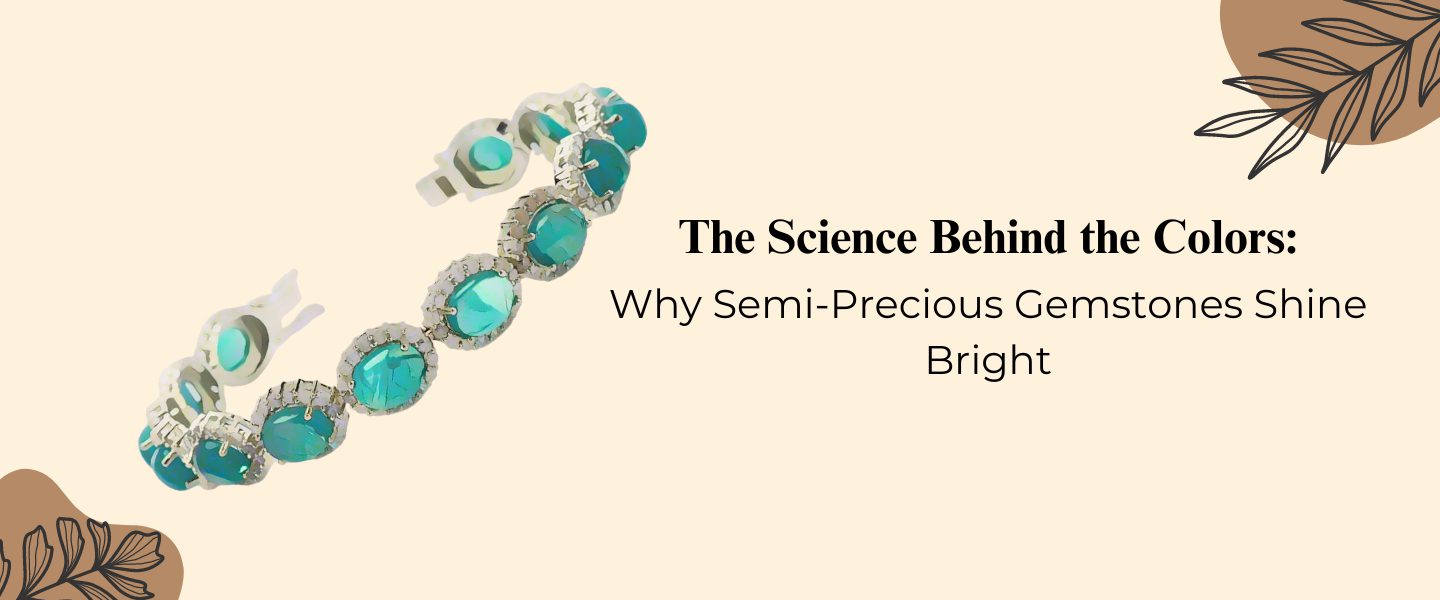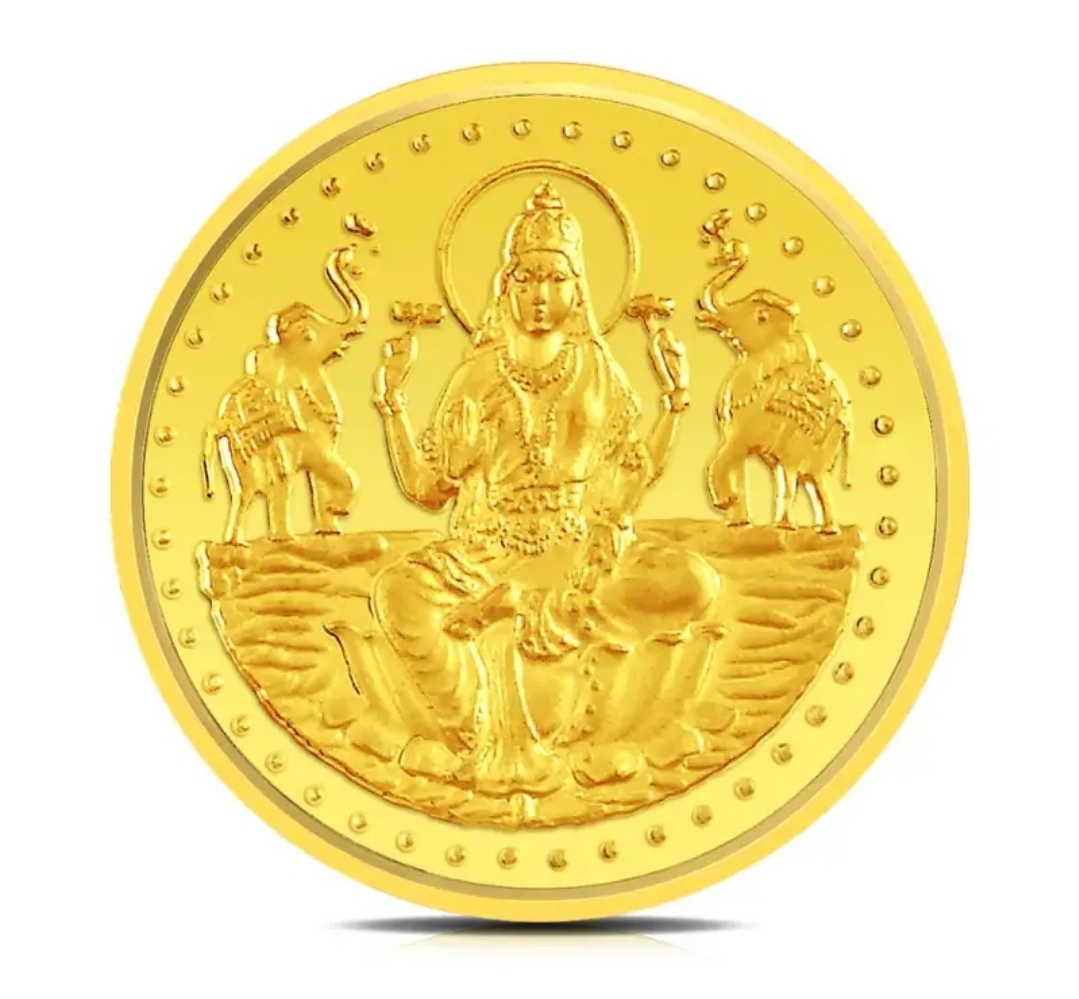Introduction
Colour has captivated human imagination for centuries, and nowhere is this more evident than in the allure of semi-precious gemstones. These dazzling stones, found deep within the earth, have been treasured not just for their beauty but for the mysterious vibrancy of their colours. But what is it that gives these gemstones their brilliant hues? At Varnium by JMT, we believe in the magic of gemstones—but also in the science that explains their wonders. In this blog post, we delve into the scientific principles that make semi-precious gemstones so vivid and captivating.
The Basics of Light and Color
To understand the colours of gemstones, we must first understand the basic science of light and colour. Light, as we see it, is actually a spectrum of different wavelengths. When light passes through a material, such as a gemstone, it can be absorbed, reflected, or refracted. The specific wavelengths of light that are absorbed or reflected by a gemstone determine its colour.
For example, when light hits an emerald, most of the red and blue wavelengths are absorbed, while the green wavelengths are reflected back to our eyes, giving the emerald its characteristic green colour. This process, known as selective absorption, is a key factor in the coloration of gemstones.
The Role of Chemical Composition
The chemical composition of a gemstone is the most significant factor that determines its colour. Different elements and compounds within a gemstone’s structure can absorb certain wavelengths of light, leading to the colour we see.
- Chromium: This element is responsible for the rich green of emeralds and the red of rubies. When chromium atoms replace aluminium in the crystal structure of corundum, the result is a ruby. In beryl, chromium gives rise to the green hues of emeralds.
- Iron: Iron can produce a variety of colours in gemstones, depending on its oxidation state. For example, iron gives the blue-green colour to aquamarine and the yellow hues to citrine.
- Copper: This element is famously responsible for the striking blue and green colours of turquoise and chrysocolla. Copper’s presence in these minerals absorbs specific light wavelengths, leaving the blue and green to be reflected.
- Titanium: In combination with iron, titanium can give rise to the famous blue hue of sapphire. The presence of titanium also leads to the star effect seen in some sapphires, known as asterism.
The Impact of Crystal Structure
While chemical composition plays a crucial role in gemstone colour, the crystal structure also contributes significantly. The way atoms are arranged in a gemstone can affect how light interacts with it, leading to variations in colour.
- Crystal Field Theory: This theory explains how the geometric arrangement of atoms in a gemstone can influence colour. When light enters a gemstone, it interacts with the electrons of the atoms in the crystal lattice. These interactions can cause electrons to absorb certain wavelengths of light, which influences the colour we see.
- Lattice Distortions: Sometimes, the crystal lattice of a gemstone may be distorted or strained due to the presence of impurities or other factors. These distortions can change the way light is absorbed, leading to unique colour variations, such as the red and green flashes seen in alexandrite.
The Phenomenon of Pleochroism
One of the most fascinating aspects of gemstones is pleochroism, where a single gemstone can appear to change colour when viewed from different angles. This phenomenon occurs because light is absorbed differently in different crystallographic directions.
- Tanzanite: A famous pleochroic gemstone, tanzanite can appear blue, violet, or burgundy depending on the angle of view. This effect is due to the way light interacts with the gemstone’s unique crystal structure.
- Iolite: Another example of pleochroism, iolite can display shades of blue, violet, or yellowish-brown, depending on the viewing angle.
The Influence of Inclusions and Impurities
Inclusions, or foreign materials trapped inside a gemstone, can also affect its colour. While inclusions are often viewed as imperfections, they can actually enhance the beauty of a gemstone by creating unique patterns or effects.
- Rutile Needles in Quartz: These needle-like inclusions can cause a shimmering effect known as “silk,” often seen in star sapphires or rutilated quartz. The presence of these inclusions scatters light, leading to the star-like patterns or a golden hue in rutilated quartz.
- Hematite in Carnelian: Hematite inclusions can give carnelian its characteristic deep red colour. The iron oxide particles scatter light, adding richness to the gemstone’s hue.
The Role of Treatments and Enhancements
In the world of gemstones, natural beauty is often enhanced through various treatments that can intensify or change a gemstone’s colour. While some treatments are centuries old, others are modern innovations that allow us to appreciate the full potential of these stones.
- Heat Treatment: Heating a gemstone can change its colour by altering the oxidation state of certain elements. For example, heat treatment can turn brownish zircon into a brilliant blue or enhance the red colour of rubies.
- Irradiation: This modern technique involves exposing gemstones to radiation to alter their colour. For example, blue topaz is often created through irradiation, transforming a colourless stone into a vivid blue one.
- Dyeing: Some gemstones, like agate or jade, are often dyed to enhance their colour. While this process can produce striking results, it’s essential to disclose such treatments to maintain transparency with customers.
The Magic of Light: Understanding Opalescence and Asterism
Beyond colour, certain gemstones exhibit unique optical phenomena due to the way they interact with light. These effects add an extra layer of beauty and mystique to the stones.
- Opalescence: Opals are famous for their play of colour, a phenomenon known as opalescence. This effect is caused by the diffraction of light as it passes through the tiny silica spheres that make up the opal’s structure. The result is a dazzling display of colours that seems to shift and change as the gemstone is moved.
- Asterism: Asterism is the star-like pattern seen in certain gemstones, such as star sapphires and star rubies. This effect occurs when light interacts with needle-like inclusions within the gemstone, creating a star-shaped reflection on the surface.
Conclusion: Celebrating the Science Behind the Beauty
At Varnium by JMT, we are passionate about the natural beauty of semi-precious gemstones, but we also celebrate the science that explains their allure. Understanding the chemical composition, crystal structure, and optical phenomena that give gemstones their colours and unique effects allows us to appreciate them even more.
Whether you’re drawn to the deep green of an emerald or the shifting colours of a tanzanite, knowing the science behind these hues only adds to their magic. As you explore our collection, we hope you’ll see these gemstones not just as beautiful adornments but as marvels of nature and science combined.
This understanding underscores our commitment to sourcing and crafting each piece with integrity, knowledge, and a deep respect for the natural world. When you wear a piece from Varnium by JMT, you’re not just wearing jewellery—you’re wearing a story of earth’s wonders, scientific marvels, and timeless beauty.


